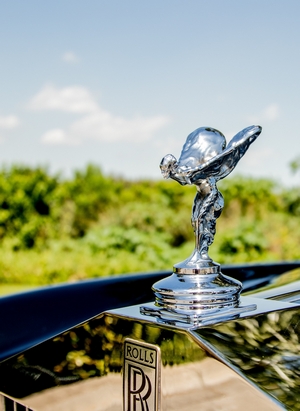

















|
|---|
|
These hood ornaments and bonnet mascots were works of art in their own right Byline: Lucy Wyndham Date: 4 July 2023 |

|
Cars of the 2020s are carefully branded with company logos that have been studiously designed, redesigned and perfected to deliver exactly the right subliminal marketing message to the target market. Some might say that is just as well, because without the clear branding, it is becoming increasingly difficult to differentiate one car from another.
The truth is, however, that we have been saying the same thing for the past 100 years. A fan of classics will say today’s Toyotas look no different to Peugeots. But then show a modern car enthusiast a big British car from the 1920s, and they will probably say “Oh it could be a Daimler or a Humber or a Jaguar – they all looked so similar back then.”
A car’s branding has always been important. But in years gone by, there was no CAD to design it and no focus groups to compare ideas. Instead, there were sculpted designs that deserve to be recognized alongside the best metal artistry of the 20th century.
Rolls Royce – the Spirit of Ecstasy
Arguably the best-known hood ornament – or bonnet mascot as it is known in its native England, the Spirit of Ecstasy has adorned the front of every Rolls Royce since 1911. There is a tragic love story behind the design, which is ostensibly supposed to be “a graceful little goddess who has selected road travel as her supreme delight.”
The design was commissioned by motoring pioneer Baron John Montagu and was modeled by Eleanor Velasco Thornton, a secretary at The Car Illustrated magazine whom the Baron met in 1902. The two carried on a secret affair for more than a decade. The fact that she was from a different social class and he was already married meant that only a handful of close friends knew anything about it.
Eleanor was killed in 1915 when the boat she and Baron John were traveling on, the SS Persia, was torpedoed by a German U-boat. She drowned alongside more than 300 others, but her memory lives on as the “silver lady.”
Hispano-Suiza
During the inter-war years if the Rolls Royce had any serious competitor among wealthy motorists, it was the Hispano-Suiza. The European manufacturer had a reputation for build quality, reliability and performance that could even rival Crewe’s finest. For example, the braking system on the models made in the 1920s was light years ahead of the basic set up in contemporaneous Rolls Royces.
Then there was the elegance. Rolls Royce had the silver lady, Hispano-Suiza had – a stork. No gangly fowl this, however. The Hispano-Souza stork is in mid-flight and could not be more graceful. It was sculpted by Parisian artist Frederic Bazin. He was a personal friend of Hispano-Suiza founder Marc Birkigt, as the pair had served together in the Great War with the French air force. Bazin was fascinated by speed and flight, and became one of the most respected metal sculptors of the art deco period.
Laurin and Klement
Today, Laurin and Klement survives only as the ultimate trim level on Skoda brands. If you want a reliable car at a sensible price but enjoy creature comforts like leather upholstery, heated seats and power-everything, a Skoda Octavia or Superb in L&K trim is well worth a look.
L&K was a successful car maker in its own right between 1905 and 1923, whereupon it was acquired by Skoda, which was the Hyundai of its day, an industrial conglomerate that was relatively new to the car world.
When the brands combined, so the cars adopted a new hood ornament. This was a beautiful 3-D rendition of the winged arrow that still appears in a less impressive 2-D form on Skodas to this day. It is believed to originate from a picture of a Native American man in a feather headband and is designed to reflect forward motion and precision.
Gordon Keeble
Not all designs are so cleverly thought up as that winged arrow. When John Gordon and Jim Keeble got together in 1959, their shared experience meant that the grand tourer they designed would be something special. And so it was; the end result had more than a hint of Lagonda and maybe a touch of Lancia about it.
Everything was done in a hurry to have the car ready for the 1960 Motor Show, and nobody thought much about an emblem. During a hasty photo shoot outside Keeble’s home, his pet tortoise walked into frame. The two men thought that a tortoise as a logo for a V-8 powered grand tourer was a fine joke, and so a corresponding hood ornament was hastily made.
The Gordon Keeble was a great example of what might have been. About 100 were manufactured during the 1960s, and amazingly at least 90 are known to have survived.
